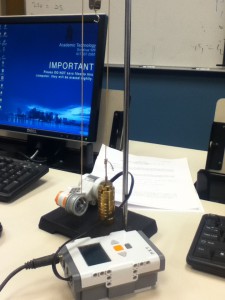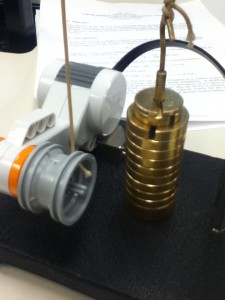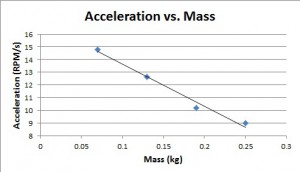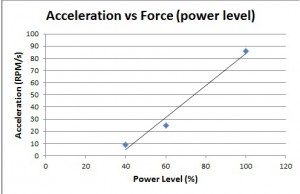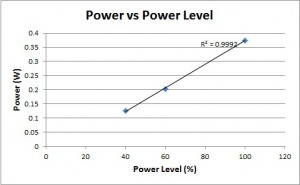This experiment had us observe a pulley system as it lifted a set of weights. The LabView program recorded certain data for us, but some data (like total height lifted) we had to record ourselves with a ruler. The point of the experiment was to see firsthand how some important laws of physics work, and how we can change an expected outcome by manipulating certain variables.
Here are some pictures of the experiment set up:
Our group first experimented with Newton’s 2nd law, which is F = MA (Force equals mass multiplied by acceleration). We did two different tests to observe this law: (1) Keeping the mass of the weights that the pulley will lift constant while changing the power level and (2) Keeping the power level constant while decreasing the mass of the weight lifted three times. In both cases, we were measuring how the variables affected the acceleration. The results were showed that both power level and mass have a direct effect on acceleration. When the mass is increased, the acceleration decreases, as shown in this graph:
And when power level is increased, there is a direct increase in acceleration, as shown in this graph:
For the next part of the experiment, we explored the law of conservation of energy through two tests: (1) Measuring the output of the battery on the NXT (measured in battery discharge) as mass is increased and (2) Measuring the power of the battery as power level is increased.
The output of the battery increased directly with an increased mass, signifying more battery power was needed to lift an increased load. As shown by this graph:
And to conclude our experiment, we found that the power of the battery did indeed increase when we increased the power level, as shown by this graph:
